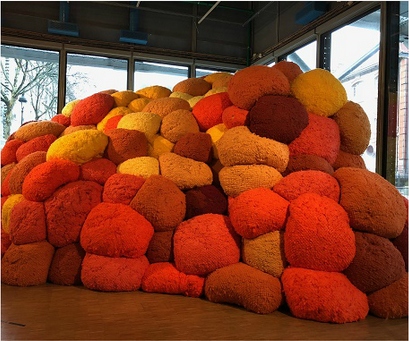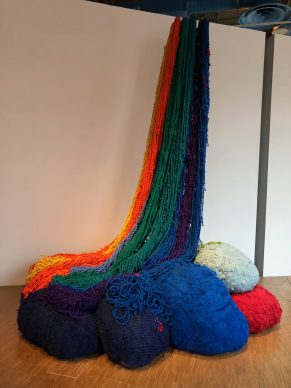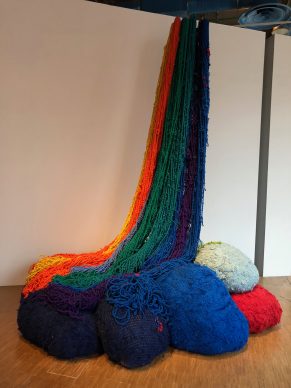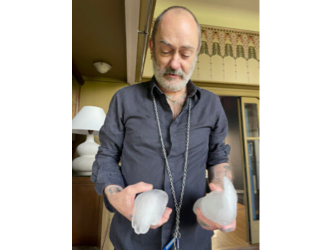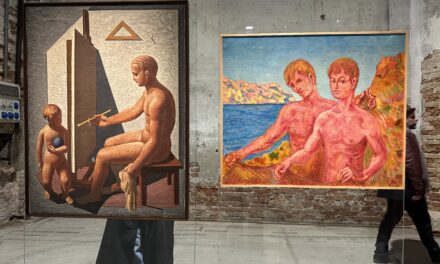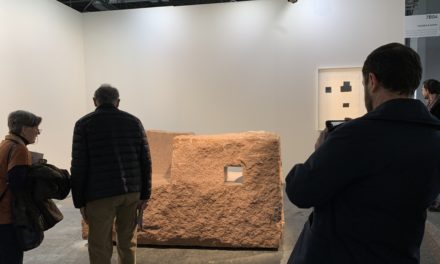Her work was recently displayed in the grounds of the Château de Versailles and at the Venice Biennale until November, and to top it all she is now the subject of a retrospective at the Centre Pompidou until 30 April. It is also not all that often that an American artist chooses to live in France; she has worked in Paris since 1964. And lastly because she produces in her sculpture, if we can call it that, a fascinating mixture of minimal art and sensuality.
Sensuality seems to be the word that best encapsulates the work on view at the Centre Pompidou, which comprises 121 artworks. To understand her practice, which these days tends to play out on a very large scale using fabric and coloured thread, we ought to take a little tour of the history of modern art, as the exhibition’s curator Michel Gauthier explains. “Sheila Hicks studied under two key figures at Yale University. She took lessons with the abstract painter Joseph Albers (1888-1976) (note: an eminent former member of the Bauhaus then of Black Mountain College) but also with George Kubler, an art historian who specialized in pre-Columbian art and textiles.”
Eric Bonnet, curator of her exhibition at the Amparo Museum in Puebla, explains Sheila Hicks’s belated international success.
In the grand tradition of Dada artists like Sophie Taeuber-Arp, she doesn’t distinguish between art and craft. And since 1955 she has worked using coloured threads that are woven, braided, embroidered, suspended, laid out flat or rolled into a ball.
Sheila Hicks explains her historical references:
Her primary objective is to make the colours dance. While painting’s objective is to cover the fabric, she uses the raw material of coloured thread, like a canvas which has been dismantled to conceive a three-dimensional work. This conceptual radicalism, which places her somewhere in between the decorative arts and the plastic arts, led her to be denied recognition for a time, up until the Whitney Biennial in New York in 2014. She then embarked upon a new phase of success, that of a young epicurean artist, then aged 80, who wanted to give sensual pleasure through her great masses of colour arranged in the space. As though the work of Matisse had been crossed with the great minimalist felt sculptures by the American artist William Morris.
Until 30 April. Sheila Hicks. Life Lines. www.centrepompidou.fr
Support independent news on art.
Your contribution : Make a monthly commitment to support JB Reports or a one off contribution as and when you feel like it. Choose the option that suits you best.
Need to cancel a recurring donation? Please go here.
The donation is considered to be a subscription for a fee set by the donor and for a duration also set by the donor.

